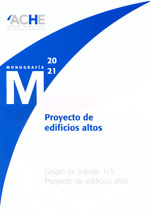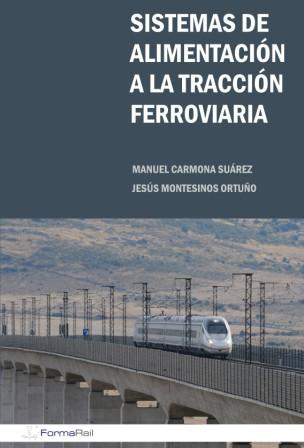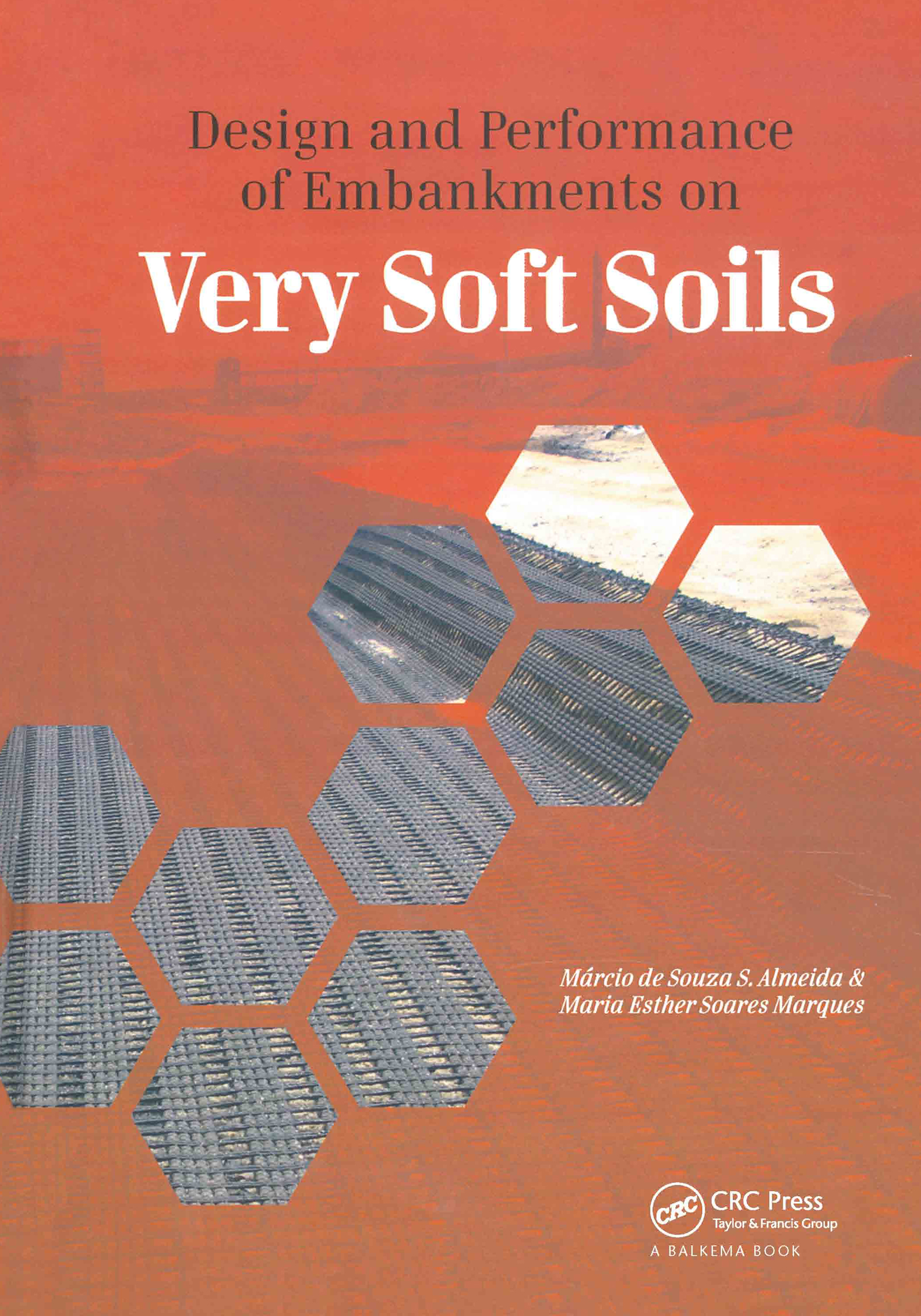

PROYECTO DE EDIFICIOS ALTOS
ACHE
Contenido
Esta publicación que ahora se presenta,si bien se
centra en temas del ámbito estructural (acciones, materiales, métodos de
cálculo, cimentaciones, esquemas o elementos estructurales), también
trata temas relacionados con la arquitectura, el entramado urbanístico
en el que se insertan estos edificios, el fuego y su protección con una
visión amplia, las fachadas, los transportes mecánicos y la interacción
entre el mencionado proyecto y el proceso constructivo. También se
incluye en su parte final un análisis de la evolución de tipologías,
alturas, materiales, usos y geografía de estas construcciones, así como
una colección de fichas mostrando las características proyectuales y
constructivas de treinta edificios españoles.
ÍNDICE
1.Introducción
,- Objeto del capitulo
,- Edificios altos.Conceptos previos
,- El skyline y el lenguaje de la arquitectura
,- El Downtown y los Skylines
,- Por que se construyen los edificios de gran altura
,- El futuro de los rascacielos en España
,- Referencias bibliograficas
2.Visión inicial de la arquitectura y la estructuras en los edificios altos
,- Introducción a los estilos arquitectonicos de los rascacielos internacionales
- El periodo funcional
- El periodo ecléctico ( Periodo Historicista )
- El tercer periodo ( Estilo internacional )
- El cuarto periodo: El postmodernismo,el High-El deconstructivismo y demás ismos
.- Introducción a la arquitectura de los edificios altos en España
,- Panorámica general
,- Bernidorm.un caso singular
,- Una introducción general a las estructuras de los edificios altos
,- Criterios básicos a considerar e el proyecto estructural
,- Elementos no estructurales
,- Instalaciones
,- Ascensores
,- Fachadas
,- Referencias bibliograficas
3.Viento
,- Introducción
,- Coeficientes de presión,de fuerzas y de momentos
,- Presión dinamica de la corriente incidente
,- Cargas estaticas
,- Fenomenos dinamicos en edificios
,- Desprendimientos de torbellinos
,- Galope transversal
,- Galope inducido por una estela
,- Divergencia a torsión
,- Bataneo
,- Formas de reducir la vibración inducida por el viento
,- Incomodidad inducida por el viento
,- Aceleraciones aceptables en edificaciones
,- Efectos del viento en los peatones
,- Influencia de los edificios en la velocidad local del viento
,- Ensayos en tunel aerodinamico
,- Referencias bibliograficas
4.Seguridad ante incendio
,- Introducción
,- Marco reglamentario
,- Aspectos particulares de la seguridad ante incencio en edificios altos
,- Compartimentación
,- Reducción del riesgo de propagación por fachada en edificios altos
,- Tratamiento normativo de los antepechos y proyecciones con paneles cortafuegos
,- Estudios sobre propagación de incendios por fachada
,- Consideraciones generales sobre la limitación del riesgo de proyección vertical
,- Evacuación de edificios altos
,- Conceptos generales
,- Evacuación por fases
,- Evacuacion de discapacitados
,- Uso de ascensores
,- Instalaciones de protección contra incendios
,- Sistemas de detección y alarma
,- Sistemas de extinción
,- Extinción automativa
,- Extinció manual
,- Acceso de los miembros de los ceiys
,- Resistencia al fuego de la estructura
,- Enfoque tradicional y enfoque prestacional del tratamiento de la resistencia al fuego
,- Estructuras de hormigón
,- Verificación de la resistencia al fuego de estructuras de hormigón armado
,- Spalling
Estructuras de acero
Estructuras mixtas
Referencias bibliograficas
5.Acciones
,- Introducción
,- Conceptos generales
,- Clasificacion y descripción general de las acciones
,- Según el origen o naturalez
,- Según la duración en el tiempo
,- Según la variación espacial
,- Según la respuesta estructural
,- Según la dirección de aplicación
,- Cuantificación de las acciones
,- Aplicación de acciones sobre la estructura
Acciones permanente
,- Peso propio de la estructura
,- Peso de los elementos constructivos del edificio
,- Peso de la maquinaria fija
,- Sobrecarga de tabiqueria
.- Acciones variables
,- Sobrecargas de uso
,- Acción del viento
,- Acciones accidentales
,- Acción sismica
,- Otras acciones accidentales
,- Acciones internas de la estructura
,- Acción térmica
,- Acciones reológicas
,- Normativa de referencia
,- Referencias bibliograficas
6.Materiales
,- Introducción
,- Hormigones
,- Introducción
,- Normativa vigente
,- Tipificación
,- Componentes
,- Propiedades mecánicas
,- Retracción
,- Fluencia
,- Adherencia
,- Diagrama tensión-deformación
,- Durabilidad
,- Corrosión
,- Carbonatación
,- Ciclo hielo-deshielo
,- Reactividad árido-álcali
,- Erosión e impacto
,- Bombeabilidad
,- Morteros
,- Introducción
,- Caracteristicas
,- Propiedades mecánicas
,- Aplicación
,- Acero para armaduras
,- Introducción
,- Armaduras pasivas
,- Barras corrugadas
,- Mallas electrosoldadas
,- Armaduras básicas soldadas en celosia
,- Diagrama tensión-deformación de cálculo para armaduras pasivas
,- Empalmes mecánicos de barras
,- Armaduras activas
,- Barras de alto límite elástico
,- Alambres y cordones
,- Diagrama tensión-deformación de cálculo para armaduras activas
,- Acero en chapas y perfiles
,- Introducción
,- Clasificación
,- Caracteristicas mecánicas
,- Chapas nervadas
,- Pernos conectadores
,- Acero en uniones
,- Materiales de aportación en soldaduras
,- Tornillos,tuercas y arandelas
,- Pasadores y peronos
,- Apoyos
,- Apoyos elastoméricos
,- Apoyos elastoméricos en caja fija o tipo pot
,- Apoyos de teflón
,- Referencias bibliograficas
7.Esquemas estructurales
,- Fundamentos
,- Introducción
,- Pórticos
,- Pórtico arriostrado
,- Pantallas o muros de cortante
,- Pórtico y muros de contante combinados
,- Tubo
,- Tubo en tubo
,- Tubo múltiple
,- Tubo arriostrado
,- Núcleo central
,- Núcleo central con apoyos perimetrales
,- Celosia espacial
,- Otros esquemas
,- Planteamiento arquitectonico-estructural
,- Aspectos generales
,- Introducción
,- Cortante,vuelco y desplazamientos
,- Esbeltez,eficiencia y altura
,- Rigidez,frecuencia y masa
,- Tipo
,- Desarrollo de tipos basados en fachada estructural
,- Entramados de pórticos
,- Reticula estructural
,- Problemas de torsión
,- Conclusiones
,- Pantallas,núcleos y sistemas combinados
,- Pantallas de hormigón
,- Colaboración de pantallas y pórticos de hormigón
,- Pantalla metálica
,- Núcleos y combinaciones diversas
,- Sistemas puente
,- Conclusiones
,- El tubo exterior y los estudios de Fazlur Khan
,- El tubo exterior.Análisis estructural
,- Diseño del tubo exterior
,- Tubo exterior.Parámetros
,- Haz de tubos
,- Tubo diagonalizado
,- Sistemas de tubo en tubo
,- Megaestructuras
,- Sistemas puente
,- Sistemas de mástil y pantallas
,- Sistemas mixtos. El banco de china
,- Nuevas tendencias en fachadas estructurales
,- Torres independientes conectadas
,- Núcleo central con fachada en espiral
,- Edificios apantallados
,- Núcleos exteriores y centro vacio
,- Torres inclinadas
,- Torres con grandes vuelos
,- Torres estrelladas
,- Torres ecológicas
,- Torres caprichosas
,- Torres móviles
,- Torres espirales
8.Métodos de cálculo
,- Introducción
,- Indentificación del esquema estructural
,- Pórticos rígidos
,- Ménsula
.- Combinación de ménsula y pórtico rígido
,- Tubos
,- Clasificación y jerarquia de los elementos estructurales
,- Estructura vertical
,-Estructuras horizontal
,-Estructuras de elementos secundarios
,- Predimensionamiento de elementos
,- Predimensionamiento de elementos frente a cargas gravitorias
,-Forjados y vigas soporte
,-Elementos verticales
,-Elementos de apeo o transición
,-Predimensionamiento de elementos frente a acciones horizontales
,-Acciones horizontales. Viento y sismo
,-Comprobación de estabilidad al vuelco
,-Modelos simples para predimensionamiento
,-Asimilación a un pórtico plano
,-Asimilación a una barra rigida en ménsula
,-Asimilación aun pórtico plano unido a una barra rígida en ménsula
,-Asimilación de un tubo porticado a un pórtico plano de rigidez equivalente
,-Método de soportes de rigidez axil infinita
,-Modelo de barras tridimensional
,-Predimensionamiento de estructuras secundarias
,-Consideraciones especiales en la modelización
,-Elementos lineales
,-Elementos superficiales tipo placa y lámina
,-Condiciones de contorno de la estructura
,-Modelización de proceso constructivo
,-Métodos de cálculo
,-Métodos de cálculo estático
,-Elásticidad Lineal
,-Método de rigidez axil infinita en pilares
,-Compensación de deformación de pilares extremos
,-No linealidad material. Cálculo plástico
,-No linealidad geométrica. Segundo orden, P-delta
,-Método Paso a Paso. Construcción evolutiva
,-Métodos de cálculo dinámico
,-Análisis modal
,-Análisis espectral
,-Cálculo por integración directa
9.Estados límite de servicio
,-Introducción
,-Combinaciones de acciones
,- Estados limites de deformaciones
,-Introducción
,-Criterios de aptitud al servicio
,-Deformaciones horizontales
,-Deformaciones verticales
,-Estado limite de vibraciones
,-Introducción
,-Criterios de aptitud al servicio
,-Criterios estructurales
,-Criterios psicológicos
,-Criterios de calidad de producción
,-Elementos para control de efectos dinámicos
,-Introducción
,-Respuesta dinámica de edificios altos
,-Comportamiento frente a movimientos sismicos
,-Comportamiento frente a cargas de viento
,-Conceptos de amortiguamiento y disipación de energía
,-Amortiguamiento en edificios altos
,-Mitigación de la respuesta dinámica en edificios altos
,-Estrategias de mitigación
,-Dispositivos suplementarios de amortiguamiento
,-Aislamiento de base
,-REFERENCIAS BIBLIOGRAFICAS
10.CIMENTACION
,-Introduccion El estudio geotécnico
,-Normativa aplicable
,-Elaboración del estudio geotécnico
,-Tipos de cimentaciones
,-Introducción
,-Cimentaciones superficiales
,-Zapatas
,-Losas apoyadas sobre el terreno
,-Pozos y cajones
,-Cimentaciones profundas
,-Introducción
,-Sistemas de contención perimetral
,-Vaciados
,-Metodos de cálculo y verificaciones
,-Métodos de cálculo
,-Modelos de cálculo. Interacción suelo-estructura
,-La seguridad en geotecnia
,-Cimentaciones superficiales
,-Zapatas
,-Losas apoyadas sobre el terreno
,-Cimentaciones profundas
,-Cálculo de pilotes
,-Cálculo de encepados rigidos
,-Cálculo de encepados flexibles o losas apoyadas sobre pilotes
,-Sistemas mixtos. Losas pilotadas
,-Vaciados y sistemas de contención perimetral
,-Otros aspectos especificos de edificios altos
,-Mecanismos de transmisión de esfuerzos horizontales
,-Estabilidad global del edificio
,-Condiciones generales de estabilidad
,-Consideración de empujes laterales del terreno
,-Efectos sobre estrucrturas próximas
,-Auscultación de cimentaciones
11.ELEMENTOS ESTRUCTURALES
,-Introducción
,-Forjados
,-Forjados de hormigón
,-Forjados de chapa colaborante
,-Comprobaciones específicas de forjados
,-Solicitaciones puntuales en zonas de anclaje de elementos de apoyo de fachadas
,-Efecto viga de gran canto
,-Unión con elementos resistentes frentea fuerzas laterales
,-Presencia de huecos y otras discontinuidades en planta
,-Acortamiento diferencial de elementos verticales
,-Elementos de apoyo de fachadas en forjados
,-Criterios de deformación admisible en bordes de fachada
,-Pantallas y nucleos de hormigón
,-Muros acoplados y vigas de conexión
,-Núcleos
,-Uniones de forjados y vigas metálicas con núcleos de hormigón
,-Uniones de vigas y forjados de hormigón con núcleos de hormigón
,-Pantallas y nucleos de celosias metalica
,-Uniones en celosías concéntricas en X (cruces de San Andrés)
,-Uniones en celosías concéntricas en K (arriostramiento tipo Chevron)
,-Uniones en celosías excéntricas
,-Uniones de momento de celosías con pórticos
,-Uniones de cortante de celosías con vigas de planta
,-Outriggers,cerchas/Vigas sombrero y cinturón
,-Outriggers
,-Cerchas/vigas cinturón (belt trusses) y cerchas/vigas sombrero
,-Vigas
,-solicitaciones puntuales en zonas de anclaje de elementos de apoyo de fachadas
,-Vigas en terrazas intermedias y entrantes de fachada
,-Uniones de momento en pórticos de vigas metálicas y estructuras tubulares
,-Uniones a cortante en forjados con vigas metálicas
,-Elementos de apoyo de fachadas en vigas perimetrales
,-Criterios de deformación admisible en vigas de fachada
,-Vigas mixtas
,-Soportes y Tirantes
,-Soportes mixtos
,-Nudos de soportes de HAR con forjados de hormigón convencional
,-Máxima relación entre resitencias de hormigones en forjado y soportes
,-Empleo de hormigones de distinta resistencia en el forjado
,-Zunchado en soportes de hormigón
,-Soportes inclinados
,-Diagonales de rifidización y megasoportes de superestructuras
,-Elementos de transferencia de cargas gravitatoiras,
12.INTERACCION DE LA ESTRUCTURA CON OTROS ELEMENTOS NO ESTRUCTURALES ,-Fachadas
,-Prestaciones generales
,-Sistemas de fachadas en edificios altos
,-Viento
,-Uso de normativas y/o códigos
,-Ensayo de túnel de viento
,-Simulaciones de viento realizadas por ordenador
,-Componentes de una fachada.Sistemas de anclaje
,-Movimientos de la estructura de afectan a los módulos de la fachada
,-Montaje
,-Limpieza y mantenimiento
,-Ensayos
,-Ascensores
,-Introducción
,-Evolución histórica del ascensor
,-El ascensor como medio de transporte
,-La instalación del ascensor
,-La tracción en los ascensores
,-Servicio de atención de llamadas
,-Sistema colectivo-selectivo
,-Sistema de preasignación
,-Transporte vertical seguro
,-Cálculos de tráfico
,-Parámetros básicos y valores recomendados
,-Caso real de cálculo de tráfico
,-Interacciones con la estructura
,-Conexión a la estructura
,-Sala de máquinas
,-Confort de viaje
,-Montaje
13. INTERACION PROYECTO - PROCESO CONSTRUCTIVO
,-Introducción
,-Proyectos de estructura
,-Materiales de construcción
,-Hormigones
;-Acero
,-Mixtos
,-Topografia y tolerancias de ejecución
,-Fase de proyecto
,-Topografía
,-Fachada
,-Ascensores
,-Cuerpos bajos
,-Construcción
,-Medios de Obra
,-Planta baja
,-Plantas técnicas
,-Ascensores
,-Interferencias de los medios de construcción
14.REALIZACIONES,-Introducción
,-Evolución en altura
,-Evolución geografica
,-Evolución del tipo y material
,-Evolución del uso de los edificios altos
,-Edificios altos Españoles
,-Caracteristicas de edificios altos Españoles
,-Torre Caja Madrid
,-Torre Cristal
,-Torre Sacyr-Vallehermoso
,-Torre Espacio
,-Torre Hotel Bali
,-Torre Iberdrola
,-Torre Lugano
,-Torre Picasso
,-Torre MAPFRE
,-Torre Arts
,-Torre Neguri Gane
,-Torre de Madrid
,-Torre Agbar
,-Torre Europa
,-Torre Levante
,-Hotel ME (antes Habitat Sky)
,-Hotel Costa Blanca I
,-Torres Puerta Europa
,-Torres Porta Fira
,-Torre Banco de Bilbao
,-Hotel Hesperia
,-Torres Gemelos 26
,-Torres de Colón
,-Torre Cataluña
,-Torres D´Oboe
,-Edificio Telefónica
,-Torre Gas Natural (Mare Nostrum)
,-Edificios Isozaki Atea
,-Torre Wöermann
,-Torres Blancas
,-REFERENCIAS BIBLOGRAFICAS
,-BIBLIOGRAFIA
Bibliografía
Características
- Páginas: 606
- Tamaño: 21x30
- Edición: 1ª
- Idioma: Español
- Año: 2013
- Precio 55,00 Euros
-
-
- SI LO DESEA PUEDE EFECTUAR SU PEDIDO EN www.ingenieriayarte.com







